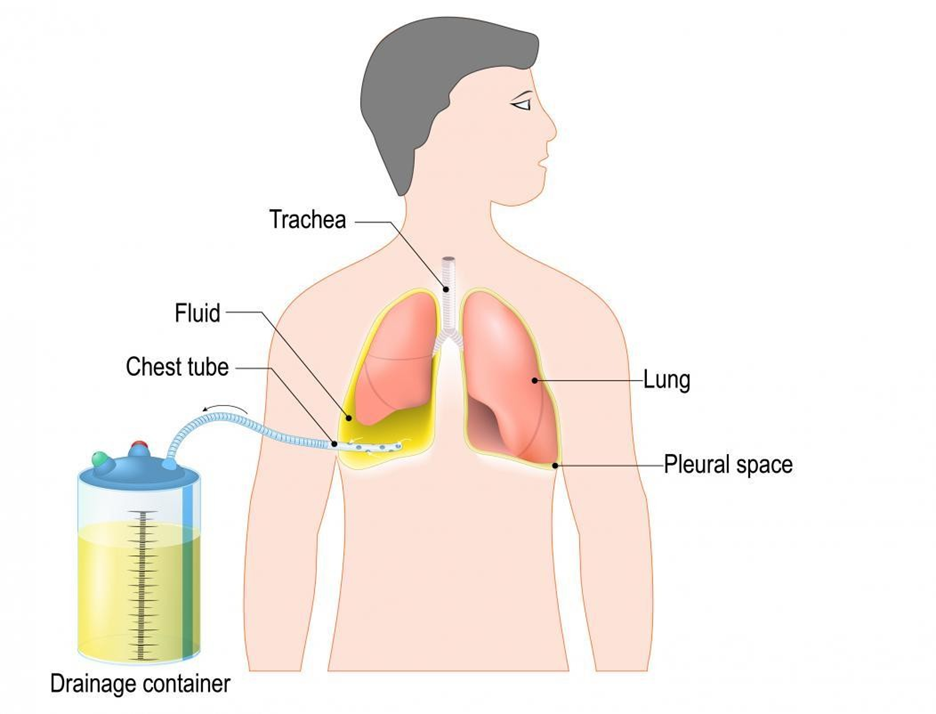A nurse is assessing a client who has a chest tube following a thoracotomy. Which of the following findings requires intervention by the nurse?
1 cm of water present in the water seal chamber
Tidaling with spontaneous respirations
Suction chamber pressure of -20 cm H20
Drainage collection chamber is one-third full
The Correct Answer is D
A. 1 cm of water present in the water seal chamber is within the expected range.
B. Tidaling with spontaneous respirations indicates the system is functioning properly.
C. Suction chamber pressure of -20 cm H2O is within the expected range for adequate suction.
D. The drainage collection chamber being one-third full suggests an accumulation of fluid beyond the expected level, which may indicate a potential complication such as hemorrhage or fluid buildup in the pleural space, requiring intervention by the nurse.

Nursing Test Bank
Naxlex Comprehensive Predictor Exams
Related Questions
Correct Answer is D
Explanation
A. Insisting the client use direct eye contact may be intimidating or uncomfortable for the client, especially in a mental health setting where individuals may have varying levels of comfort with eye contact.
B. Seating the client at such a distance may create a physical barrier and hinder effective communication between the nurse and the client.
C. Positioning the client's chair between the nurse's chair and the door may make the client feel trapped or uncomfortable, especially during a sensitive interview.
D. Leaning in slightly when speaking to the client demonstrates attentiveness and facilitates a sense of closeness and engagement in the conversation, which can help build rapport and trust.
Correct Answer is C
Explanation
A. While hydrogen peroxide has some disinfectant properties, it is not as effective as other agents like chlorine bleach for cleaning surfaces contaminated with blood.
B. Isopropyl alcohol is effective against many pathogens but may not be as effective as chlorine bleach specifically for bloodborne pathogens.
C. Chlorine bleach is an effective agent for cleaning surfaces contaminated with blood and other bodily fluids, as it has strong disinfectant properties.
D. Chlorhexidine is primarily used as an antiseptic for skin preparation and may not be as effective for surface cleaning of blood contamination.
Whether you are a student looking to ace your exams or a practicing nurse seeking to enhance your expertise , our nursing education contents will empower you with the confidence and competence to make a difference in the lives of patients and become a respected leader in the healthcare field.
Visit Naxlex, invest in your future and unlock endless possibilities with our unparalleled nursing education contents today
Report Wrong Answer on the Current Question
Do you disagree with the answer? If yes, what is your expected answer? Explain.
Kindly be descriptive with the issue you are facing.
